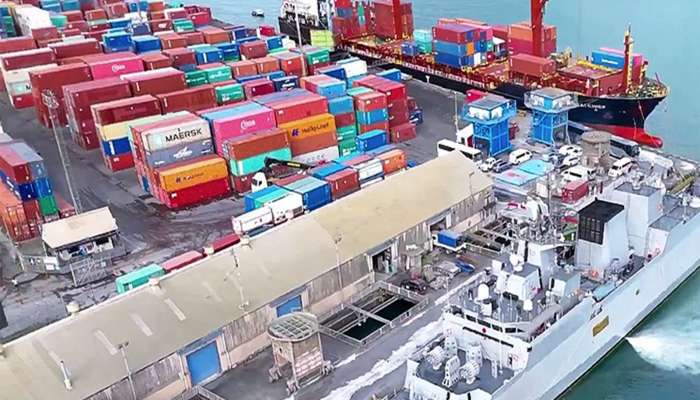
New Delhi: The global trade recently witnessed a key example of the rising era of protectionism and tariff barriers, and a major challenge to the free trade regime.
The second phase of the Trump Administration is leading a revival of protectionism, despite the US being hailed as a champion of free trade for decades, which has led to disruptions to various industries globally.
Countries across the globe, including Mexico, Brazil, South Africa, Canada, Ireland, Taiwan, India, and Thailand, to name a few, are facing the brunt of the trade shock, along with the US itself.
For example, farmers from the US now have diminished access to international markets, while the carpet weavers in India are finding their export consignments being canceled due to a steep rise in tariffs.
The question we face now is how the economies are going to recover from the trade shock. Delving into Economics 101 provides some insights into the story. Nations face changes in trade flows due to changes in the trade costs, which are caused by trade policy shocks (like tariff hikes). Economists call this phenomenon Trade Elasticity.
This is how trade elasticity works. In the short frame of time, the export supply is inelastic. Hence, the countries facing adverse economic shocks would have to wait, with high chances that their consignments may rot; With mounting inventories and reduced sales, they would face economic hardships.
These are the negative adjustment shocks; unfortunate but inevitable. However, over time, as the market participants gain a grasp of the situation and the shocks in the system become a norm, the reading adjustments follow.
The dependence on a single trade partner eases, and the export supply and export demand become highly elastic, as the affected party looks for alternatives to diversify its trade partners and commodity basket. There is empirical evidence for this kind of global pattern of elasticity, and in the present scenario of tariff hikes, one can expect many nations to experience the trade elasticity adjustment.
This can already be seen in how the economies are forging new alliances, or invoking old ones, through various FTAs, strategic alliances, and venturing into non-traditional sectors. Focusing on India, which is bearing the brunt of a 50 percent hike in tariffs by the Trump administration, one can find a similar pattern being followed.
India's export basket to the US primarily comprised electrical machinery and equipment (including electronics), pharmaceuticals, gems and jewellery, engineering goods (including machinery and auto parts), textiles and apparel, and petroleum products.
Now, to mitigate the impact of the US tariff hike, India has been swiftly focusing on both intensifying its trade with existing partners and extending its trade relations by acquiring new industries and partners.
For instance, realising the potential of the gems and jewellery trade with the Gulf, India is actively engaging with the Gulf Cooperation Council (GCC) countries to intensify its trade in gold, diamonds, and other gems with Saudi Arabia and the UAE. India is venturing into Saudi Arabia’s luxury market via strategic acquisitions as well as tailoring their products to meet the specific demands for high-end luxury jewellery.
Moreover, there is a rising impetus to enhance cooperation in the critical minerals sector between India and Saudi Arabia, in order explore new investment opportunities to establish reliable and secure mineral supply chains to reduce dependency on imports.
Looking further west, India and the UK have already signed a Comprehensive Economic and Trade Agreement (CETA) in July 2025, which aims to double bilateral trade to $112 billion by 2030. The deal will provide duty-free access for 99% of Indian exports to the UK and reduce tariffs on 90% of UK tariff lines, benefiting Indian sectors like textiles, footwear, and gems.
Following the execution of the India-EFTA Trade and Economic Partnership Agreement (TEPA) in 2025, India is expected to have enhanced market access for goods and services as well as professionals, along with technological collaboration with the European Free Trade Association nations.
Besides, India is diversifying its bilateral trade by entering into newer inter- and intra-industries in the field of renewable energy, critical minerals, AI and ICT, EVs, among others, with ASEAN economies, like the Philippines and Thailand.
The tariff rise has given India, in disguise, an opportunity to restructure its export basket and trade partners. Now the shift has begun to revamp the export basket to include more manufacturing-based commodities, embodying high levels of technology diffusion and skills.
As per experts, the recent FTAs with European economies and Australia, are a welcome move as they will open up markets for high-value exports and deeper integration into the global value chain.
It is also time to expedite the ongoing FTA negotiations with the European Union (EU), Oman, Canada, and Peru. For instance, India should try to find a market for its carpets (which is adversely affected by the tariff rise) in Europe or Canada. India is also leveraging its presence on important platforms like BRICS and ensure the strengthening of ties with other nations facing the heat of rising protectionism in BRICS and Africa.
Under the Production Linked Incentive (PLI) Scheme, India's pharmaceutical export markets are also diversifying beyond traditional destinations like the US and Europe, with a growing focus on Africa, Latin America, Southeast Asia, and the UK, driven by demand for affordable generics.
The rise in protectionism all over the globe, brought by the recent measures of the Trump Administration, is drastic, dramatic, and draconian. The honest fact of the hyperconnected world is that the tariff rise by the US is hurting itself as well , along with others, leading to sub-optimal outputs in total.
The global trade shock is in the process of getting absorbed, achieving export supply elasticity with respect to the US, while India is diversifying its market through a robust manufacturing base and venturing into non-traditional technology-intensive industries. Thus, India’s spree to diversify its economy and strengthen bilateral and multilateral trade relations is a welcome act of resistance and resilience.